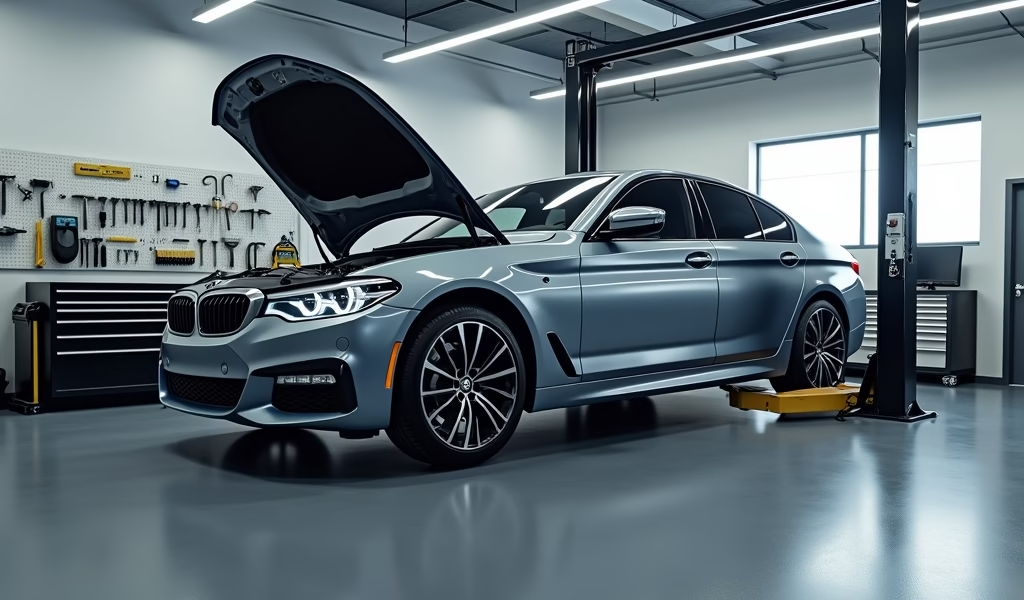Overview
This article outlines five essential vehicle maintenance practices that can reduce auto insurance costs: regular oil changes, proper tire care, brake system maintenance, battery upkeep, and following manufacturer maintenance schedules. By investing in preventative maintenance, drivers can extend vehicle life, improve safety, and position themselves as lower-risk insurance customers who qualify for premium discounts.
Table of Contents
- Introduction: Protecting Your Vehicle and Your Wallet
- Regular Oil Changes: The Lifeblood of Your Engine
- Tire Maintenance: Where the Rubber Meets the Road
- Brake System Care: When Stopping Matters Most
- Battery and Electrical System: Power When You Need It
- Following a Maintenance Schedule: Your Vehicle’s Roadmap
- Conclusion: Small Investments, Big Returns
- Frequently Asked Questions
Introduction: Protecting Your Vehicle and Your Wallet
When it comes to general auto insurance, what you do before you ever file a claim can be just as important as the coverage you choose. As a master technician with over 20 years in the garage, I’ve seen how routine maintenance doesn’t just extend your vehicle’s life—it can significantly reduce your insurance costs too.
Insurance companies love responsible car owners. Why? Because well-maintained vehicles simply have fewer accidents and breakdowns. That translates to fewer claims, which means you become the kind of customer they want to keep happy with lower rates.
Think of proper car maintenance as preventative medicine. A small investment of time and money now can prevent major expenses and insurance headaches down the road. The oil change you skip today might lead to the engine failure—and potentially the accident—that sends your premiums skyrocketing tomorrow.
Let’s roll up our sleeves and explore five practical maintenance tips that can help keep both your car and your general auto insurance costs running smoothly.
Regular Oil Changes: The Lifeblood of Your Engine
If there’s one maintenance task that pays the biggest dividends, it’s regular oil changes. Engine oil isn’t just a lubricant—it’s a cleaning agent, cooling medium, and protection system all in one slippery package.
Modern engines are precision machines with tolerances measured in thousandths of an inch. When parts move at thousands of RPM, even microscopic metal particles from normal wear can cause accelerated damage without clean oil to capture and remove them.
When to Change Your Oil
Forget the old 3,000-mile rule—it’s outdated for most vehicles. Modern cars with synthetic oil can often go 7,500-10,000 miles between changes. However, your specific interval depends on:
- Your manufacturer’s recommendations (always check your owner’s manual)
- Your driving conditions (frequent short trips, extreme temperatures, and towing require more frequent changes)
- The type of oil you use (synthetic generally lasts longer than conventional)
For most drivers, the oil change light or reminder system in your vehicle is a reliable guide. Just don’t ignore it when it appears—that little light is your engine’s cry for fresh fluids.
Beyond Oil: The Full Fluid Check
While you’re getting that oil changed, make sure other vital fluids are checked too:
- Transmission fluid (dark or burnt-smelling fluid spells trouble)
- Coolant/antifreeze (essential for preventing overheating)
- Brake fluid (low levels can indicate leaks or worn brake pads)
- Power steering fluid (prevents that dreaded steering wheel stiffness)
A vehicle leaking fluids is a vehicle asking for help. Those rainbow puddles under your car aren’t just unsightly—they’re warning signs of potentially serious problems that could leave you stranded or cause an accident. Either scenario could impact your general auto insurance premiums.

Tire Maintenance: Where the Rubber Meets the Road
Your tires might be the most underappreciated components on your vehicle. Think about it: just four patches of rubber, each about the size of your hand, keep two tons of metal safely connected to the road at highway speeds. Proper tire care isn’t just about avoiding flats—it’s about preventing accidents that could send your insurance rates through the roof.
Pressure: The Invisible Performance Factor
Tire pressure affects everything from fuel economy to handling and braking distance. Underinflated tires flex more, creating heat and increasing the risk of a blowout. Overinflated tires have reduced contact with the road, compromising traction especially in wet conditions.
Check your pressure monthly and before long trips. The correct pressure isn’t the maximum PSI listed on the tire sidewall—it’s the recommendation listed on the driver’s door jamb or in your owner’s manual.
Rotation: Spreading the Wear
Even perfectly aligned vehicles distribute weight unevenly across tires. Front tires typically bear more weight and handle steering forces, wearing faster than rear tires. Regular rotation (every 5,000-8,000 miles) ensures even wear, extending tire life and maintaining optimal handling.
Alignment: The Straight and Narrow
If your vehicle pulls to one side or your steering wheel isn’t centered when driving straight, your alignment needs attention. Poor alignment accelerates tire wear and reduces fuel efficiency, but more importantly, it can affect your ability to control your vehicle in emergency situations.
According to the National Highway Traffic Safety Administration, tire-related crashes cause hundreds of fatalities annually. Many of these accidents could be prevented with proper tire maintenance—a compelling reason why insurance companies offer discounts for well-maintained vehicles.
Brake System Care: When Stopping Matters Most
When it comes to safety systems, nothing is more fundamental than your brakes. The ability to stop quickly and predictably isn’t just convenient—it’s often the difference between a near-miss and an accident that affects your driving record and general auto insurance premiums for years.
Warning Signs You Shouldn’t Ignore
Your brakes usually give clear signals when they need attention:
- High-pitched squealing (wear indicators are touching the rotors)
- Grinding noises (pad material is gone, metal-on-metal contact is occurring)
- Pulsation in the brake pedal (likely warped rotors)
- Vehicle pulling to one side when braking (caliper issues or uneven pad wear)
- Soft or spongy pedal feel (possible air in the lines or fluid leaks)
Any of these symptoms warrants immediate professional attention. With brakes, small problems quickly become big ones—and big brake problems can be catastrophic.
Brake Fluid: The Hydraulic Lifeline
Brake fluid is hygroscopic, meaning it absorbs moisture from the air over time. This water contamination lowers the fluid’s boiling point, potentially causing brake fade during hard stops. Most manufacturers recommend changing brake fluid every 2-3 years regardless of mileage.
Have your brake fluid’s condition tested during regular service visits. Dark, cloudy fluid is a clear sign it’s time for replacement—before it compromises your stopping power and safety.
Remember, insurance companies look closely at accident history when setting rates. Maintaining your brakes isn’t just about safety—it’s about protecting your driving record and keeping your premiums manageable.
Battery and Electrical System: Power When You Need It
In today’s vehicles, electrical system reliability is more critical than ever. Modern cars rely on dozens of computer modules controlling everything from engine performance to safety systems. At the heart of it all is your battery—a component that typically works flawlessly until the day it suddenly doesn’t.
Battery Life Factors
The average car battery lasts 3-5 years, but several factors can shorten this lifespan:
- Climate (extreme heat accelerates internal corrosion)
- Short drives (the battery never fully recharges)
- Parasitic drains (alarm systems, memory settings, etc.)
- Loose connections (preventing proper charging)
Have your battery tested annually after it reaches three years of service. Most auto parts stores and service centers perform this test for free, potentially saving you from the inconvenience and dangers of unexpected failure.
Simple Battery Maintenance
Even “maintenance-free” batteries benefit from basic care:
- Keep terminals clean and tight (corrosion prevents proper electrical flow)
- Secure the battery in its mounting (vibration damages internal plates)
- Address warning signs promptly (slow cranking, dimming lights, electrical issues)
- Consider a battery tender for vehicles driven infrequently
Battery failures often leave drivers stranded in potentially dangerous locations or situations. From an insurance perspective, this increases the likelihood of roadside emergency claims and, in worst-case scenarios, accidents from vehicles stalled in hazardous locations.

Following a Maintenance Schedule: Your Vehicle’s Roadmap
Your owner’s manual contains a maintenance schedule that represents millions of dollars in engineering research and real-world testing. This isn’t just a suggestion—it’s your vehicle’s personalized roadmap to longevity and reliability.
Major Service Intervals
Most manufacturers designate specific mileage points (typically 30,000, 60,000, and 90,000 miles) for more comprehensive service. These intervals often include inspection and replacement of components that don’t show obvious symptoms when they begin to fail:
- Timing belts and chains
- Water pumps
- Spark plugs
- Transmission services
- Fuel filters
- Differential fluid
Skipping these services to save money in the short term often leads to much larger expenses down the road. A timing belt replacement might cost $500-800, but a failed timing belt can cause engine damage exceeding $2,000-5,000.
Documentation: Your Maintenance History Matters
Keep detailed records of all maintenance performed on your vehicle. This documentation serves multiple purposes:
- Supports warranty claims
- Provides evidence of proper care for insurance purposes
- Substantially increases resale value
- Helps identify patterns in your vehicle’s service needs
Some general auto insurance companies offer discounts for vehicles with comprehensive maintenance records. This makes perfect sense—well-maintained vehicles are simply less likely to be involved in accidents caused by mechanical failure.
According to Car Care Council research, properly maintained vehicles last longer, retain more value, and experience fewer roadside emergencies—all factors that can positively influence your insurance costs.
Conclusion: Small Investments, Big Returns
Maintaining your vehicle isn’t just about avoiding the inconvenience of breakdowns—it’s about protecting one of your most significant investments and potentially saving on general auto insurance costs. Each maintenance task we’ve discussed represents a small investment that yields substantial returns in safety, reliability, and long-term savings.
Insurance companies have good reason to offer discounts for well-maintained vehicles. Their data clearly shows that responsible car owners file fewer claims. By following these five maintenance tips, you’re not just extending your vehicle’s life—you’re positioning yourself as the kind of policyholder insurance companies want to keep.
The road to lower insurance rates is paved with regular maintenance. That oil change, tire rotation, or brake inspection might seem like an expense today, but it’s actually an investment in tomorrow’s savings. When it comes to your car and your insurance costs, an ounce of prevention truly is worth a pound of cure.
Remember, your vehicle takes care of you every day. A little care in return not only keeps it running smoothly but might just keep a little extra money in your wallet too—both at the repair shop and when that insurance renewal arrives in your mailbox.
Frequently Asked Questions
What discounts can I get on general auto insurance for vehicle maintenance?
Many insurers offer discounts for vehicles with documented maintenance histories and safety features. These typically range from 5-15% depending on the company and your overall maintenance record.
How often should I have my brakes inspected to maintain safety and keep insurance costs down?
Have your brakes professionally inspected at least once a year or every 12,000 miles. More frequent inspections are recommended if you notice any change in braking performance or hear unusual noises.
Will installing aftermarket parts affect my general auto insurance coverage?
Modifications can impact coverage and may require additional insurance for the custom parts. Always notify your insurance company about significant modifications to ensure proper coverage.
How does a vehicle’s maintenance history affect its insurance premium?
A well-documented maintenance history demonstrates responsible ownership, which can qualify you for lower-risk driver discounts. It also provides evidence that mechanical failures were properly addressed, potentially supporting claims if an accident occurs.
Can neglecting maintenance void my auto insurance coverage?
While basic neglect typically won’t void coverage, insurers may deny claims if they can prove an accident resulted directly from willful negligence of a known issue. Maintaining your vehicle properly protects both your safety and your coverage.


Pingback: lawyer in car accident 5 Secret Car Tips - knowsyourcar.com